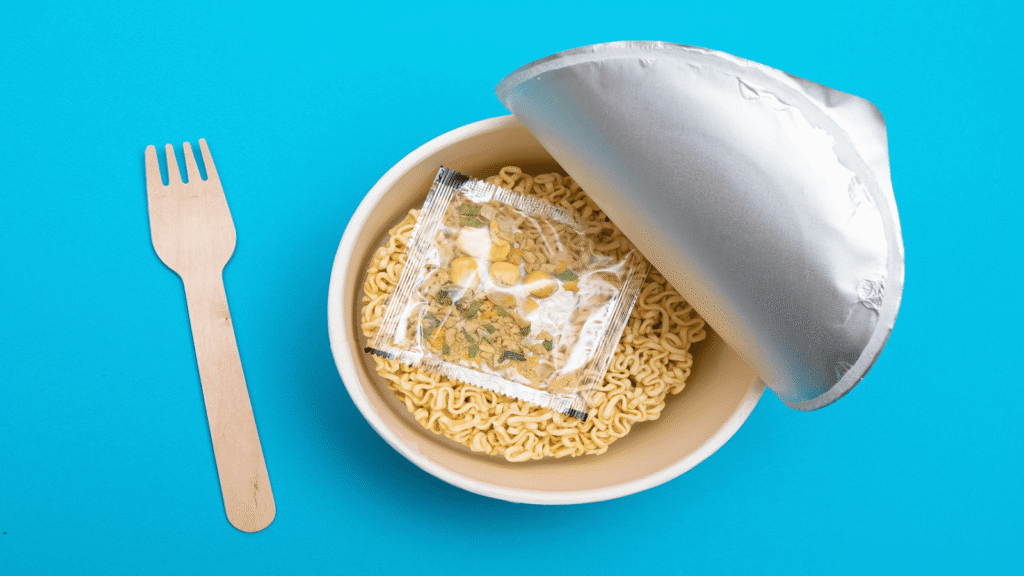Serving instant noodles in large paper cups is common in both retail and food service—but what makes these cups safe and effective for hot, extended soaks?
Large noodle cups are made from thick food‑grade paperboard1 with a heat‑resistant coating2 such as PE, water‑based polymer, or PLA, and often include reinforced lids for transport and spill protection.
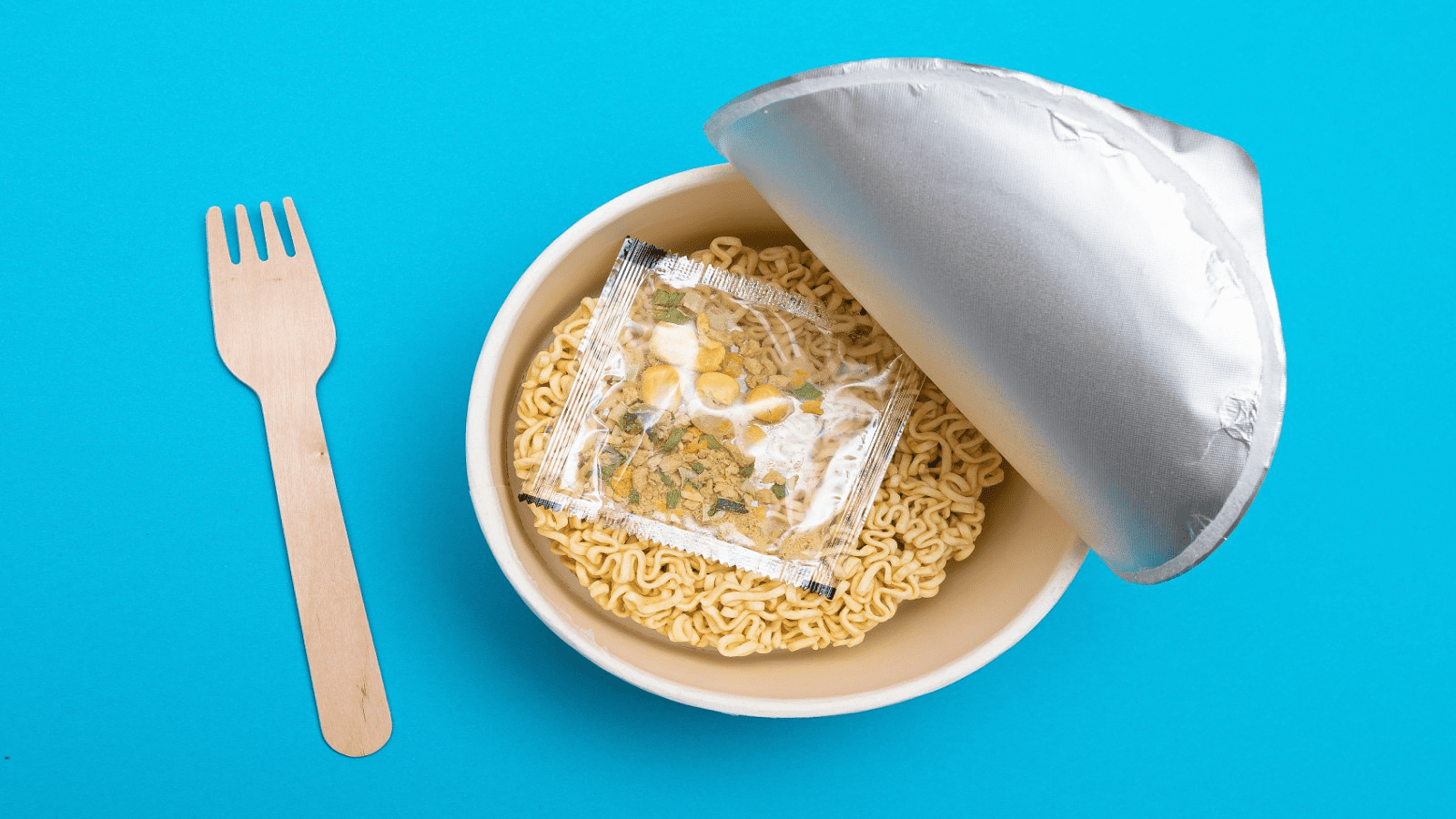
I’ve worked with clients from major instant noodle brands, and I’ve seen how the right cup design balances size, strength, and sustainability.
What is cup noodles packaging made of?
A cup noodle package is more than just paper—it’s engineered for heat, liquid, and structural integrity.
Typical noodle cups use 350–370 g/m² paperboard, coated inside with PE, water‑based polymer, or PLA; some high‑eco versions use molded pulp3 with food‑safe sealing agents.
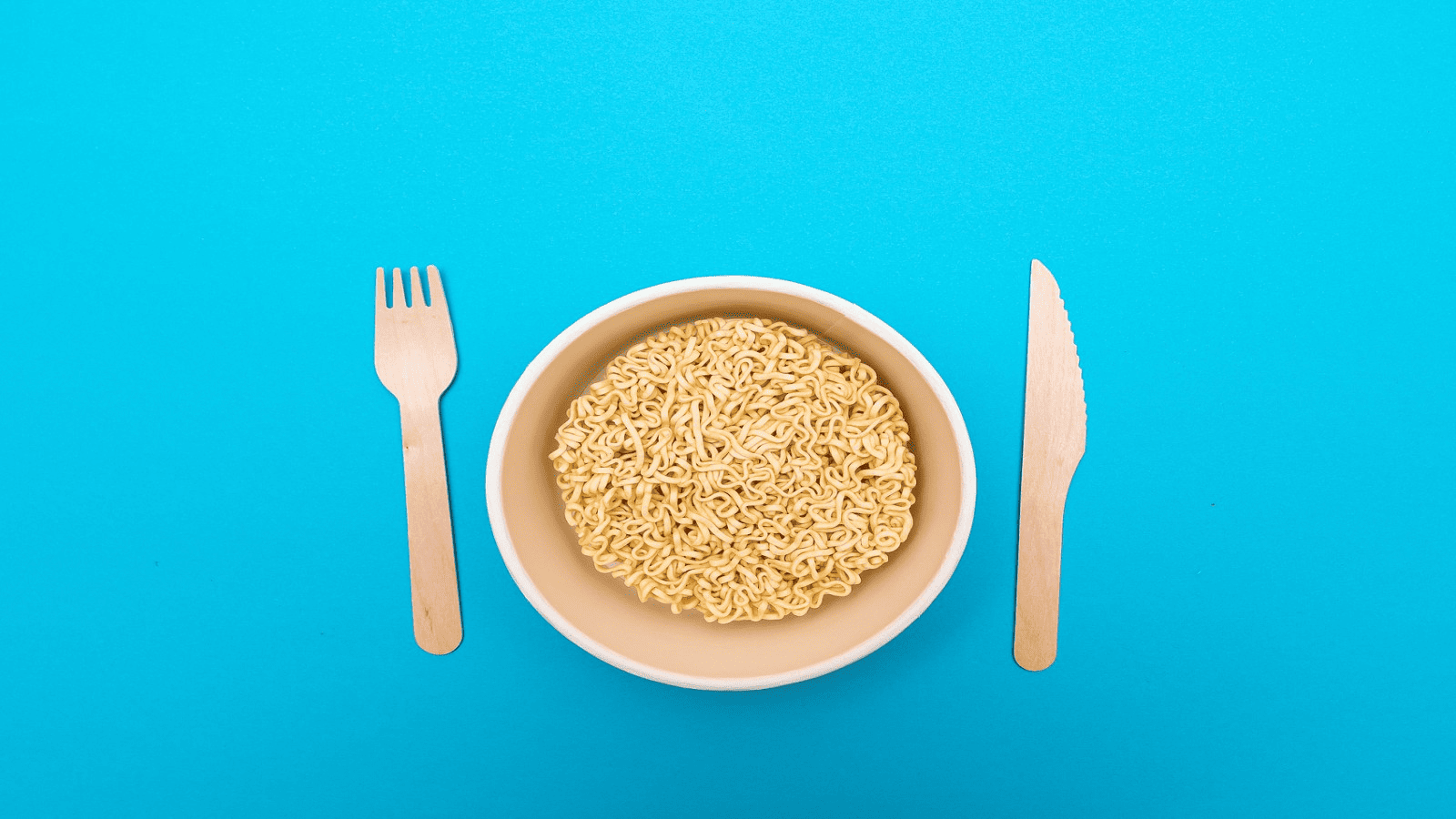
The cup is often paired with a PP lid for durability or a paper lid for more eco‑minded markets. Premium designs use double‑layer walls4 for insulation.
Common Materials for Noodle Cups
| Material Type | Heat Limit | Leak Resistance | Compostable | Typical Use Case |
|---|---|---|---|---|
| Double‑PE coated board | 120℃ | ★★★★★ | No | Mass market, cost‑focused |
| Water‑coated board | 130℃ | ★★★★☆ | Yes | Eco + high heat |
| PLA‑coated board | 85℃ | ★★★★ | Yes | Cold/medium heat eco branding |
| Molded pulp + agent | 100℃ | ★★★★ | Yes | Fully eco, niche market |
What is the new packaging for Cup Noodles?
Recent trends are driven by environmental policy and consumer demand for lower carbon footprints.
New packaging focuses on water‑based coated paperboard5 for recyclability, or molded pulp3 for full compostability, replacing plastic linings in some markets.
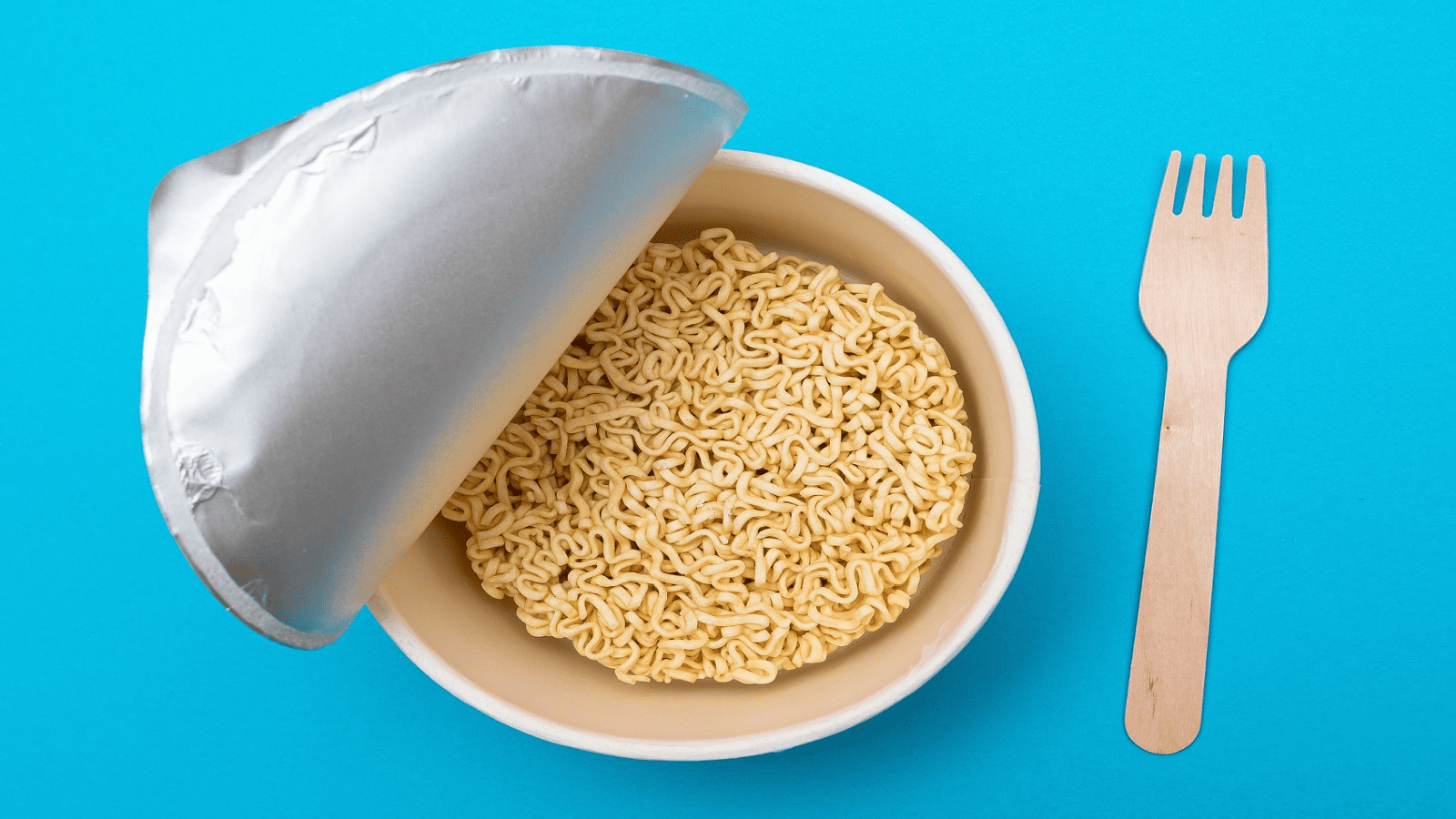
In Japan, Nissin’s premium line upgraded to water‑based coated board to comply with strict recycling policies, achieving both performance and regulatory compliance.
Eco‑Upgrade Examples
- Water‑coated board: Keeps heat performance, easier to recycle.
- PLA coating: Plant‑based, used where composting is available.
- Molded pulp: Zero plastic, ideal for full green branding.
What type of packaging is used for noodles?
While instant noodles in bulk pouches use plastic film, cup noodles rely on rigid, heat‑safe paper containers.
Instant noodles in cup format use thick paperboard containers with heat and leak coatings, plus lids made of PP, paper, or composite materials for sealing.
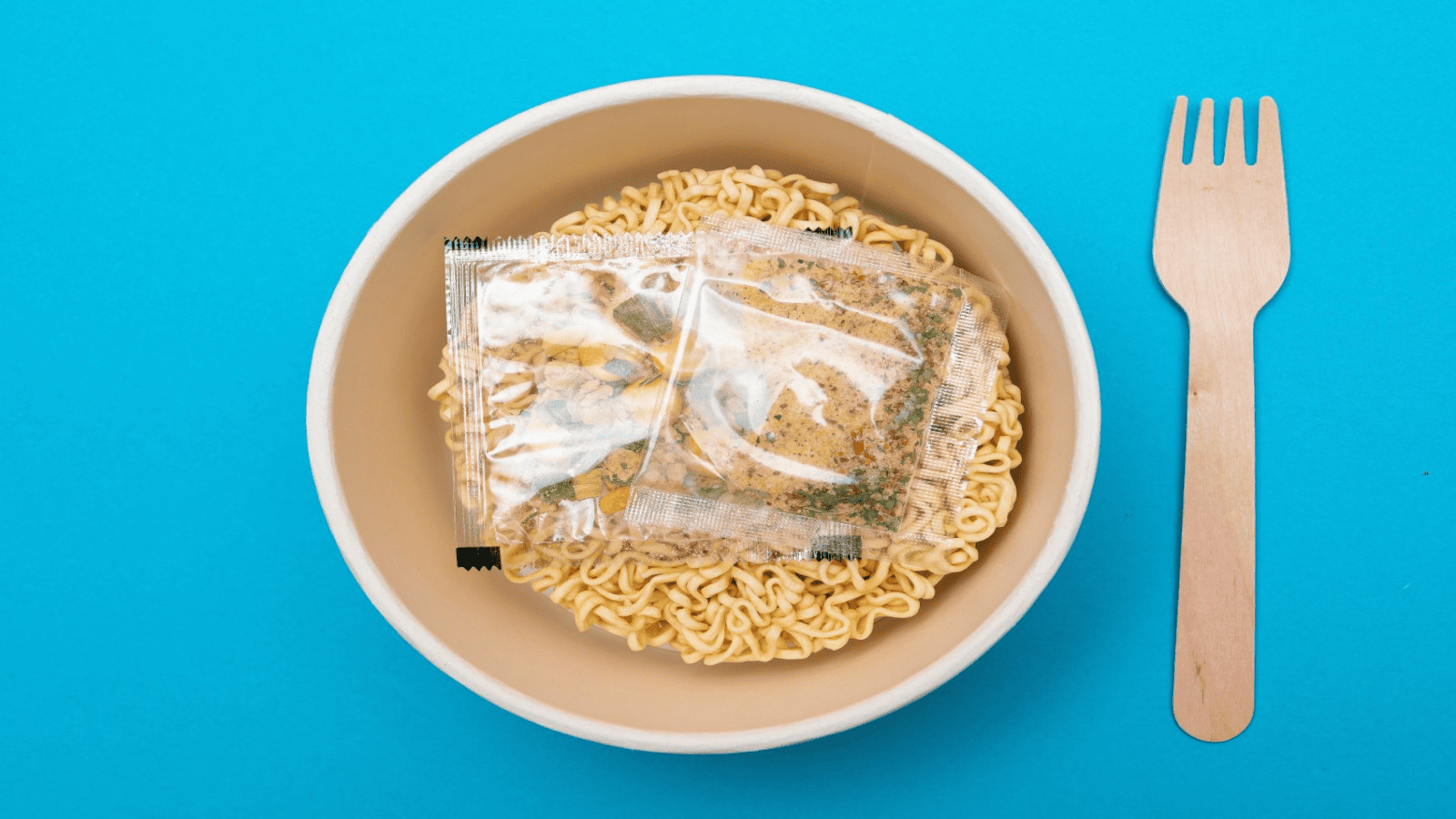
I’ve supplied both retail noodle brands and foodservice operators with cups in 500–800 ml, built with double walls or extra‑thick single walls to withstand boiling water soaking for up to 15 minutes.
Typical Cup Sizes and Uses
| Volume | Common Size (mm) | Consumer Type |
|---|---|---|
| 500 ml | 100×70×120 | Standard upgraded serving |
| 600 ml | 105×72×125 | Add‑on toppings, larger appetites |
| 700–800 ml | 110×75×135 | Full meals, loaded ramen, delivery bowls |
How to make instant noodles package?
Producing a safe, functional, large noodle cup requires careful material choice, shaping, and testing.
Manufacturers select the right paperboard weight, apply a heat‑safe coating, shape the cup by forming machines, add lids, and test for leakage, stiffness, and compliance.
![making instant noodles paper cup]https://papercupshkl.com/wp-content/uploads/2025/08/图片5-2.png "making instant noodles paper cup")
In my projects, we start with FSC‑certified board6, cut and curl blanks into the cup shape, seam with waterproofing, then add tested coatings. QA runs heat soak tests7 with boiling water to ensure performance.
Steps in Noodle Cup Production
- Choose base paperboard (350–370 g/m²).
- Apply PE, water‑based, or PLA coating.
- Die‑cut and curl blanks into body shape.
- Seal seams and add leak‑proof lining.
- Fit lid type per market need (PP or paper).
- Perform heat, leak, and stiffness tests.
- Pack for export with protective stacking.
Conclusion
Large instant noodle paper cups combine strong food‑grade board with high‑heat coatings, designed for capacity, safety, and sometimes eco‑compliance8—making them reliable for both consumers and wholesale buyers.
1.Explore the importance of food‑grade paperboard in packaging and its safety for food products. ↩
2.Learn about different types of heat‑resistant coatings and their benefits for food safety. ↩
3.Find out how molded pulp is revolutionizing eco-friendly packaging solutions. ↩
4.Understand how double-layer walls improve insulation and durability in food containers. ↩
5.Discover how water‑based coatings enhance recyclability and sustainability in packaging. ↩
6.Learn about the significance of FSC certification in promoting sustainable forestry practices. ↩
7.Explore the process of heat soak tests and their role in ensuring packaging safety. ↩
8.Discover the importance of eco-compliance in meeting environmental regulations and consumer expectations. ↩
